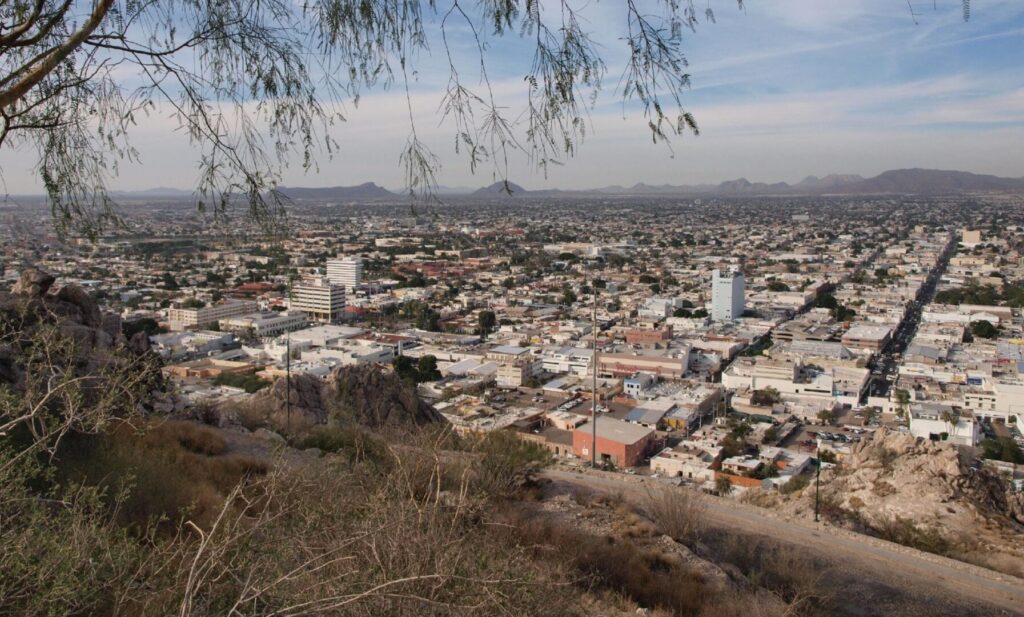Product of two workshops designed by the Urban Resilience to Extreme Events Research Network and for the Municipal Institute of Urban PlanningThe event, academics and organizational leaders proposed a series of social, ecological and infrastructural strategies aimed at achieving a vision of a resilient future for the city of San Francisco. Hermosillo.
The study Hermosillo: a city with water for the present and the future?published by the organization Hermosillo, how are we doing?The following chapter highlights Future visions of resilience for the city of Hermosillo: A citizen's perspective.The objective of the workshops was to create future visions that allow the city to be more resilient to extreme weather events and to support urban planning and development, generating future scenarios through a participatory and anticipatory process.
"This exercise was useful for promoting resilience to extreme weather events of drought, urban flooding and heat waves," he says.
Participants defined goals and strategies for each scenario, and presented their visions of Hermosillo in 2080.
Several social, ecological, and infrastructure strategies that have been implemented in adaptation and resilience interventions in other cities around the world were presented, the study highlights.
The academics and leaders of the organizations that participated in this study proposed the following strategies, with their objectives and lines of action
Strategies for absorbing and capturing rainwater and storm water
- Sponge City
Objective: Use rainwater to reduce flooding and increase water supply through aquifer recharge in urban and peri-urban areas.
Lines of action
- Redesign and reconstruction of streets to create green corridors
- Purple line project for reuse of treated wastewater
- Rehabilitation of hydraulic infrastructure
- Rainwater management for aquifer recharge
- Transformation of storm drains to Green Corridors
- Use of permeable infrastructure in streets and public areas
- Construction of rain gardens
- Regulating construction companies for the implementation of bioclimatic designs and green infrastructure, and urban development for sprawl control.
- Establishment of a multidisciplinary network involved in water management decision making
Strategies aimed at minimizing urban sprawl, sustainable mobility and connectivity.
- Smart infrastructure and spaces that work
Objective: Appropriate urban development and impact. Create an intelligent system to promote sustainable development practices and maximize environmental benefits, resulting in an impact on the efficient use of water.
Lines of action
- Develop plans and pilot projects for Intelligent and Smart Spaces for urban development
- Establishment of a network of urban parks that are linked to maximize environmental benefits.
- Land-use change programs and regulations that encourage specific types of investment
- Create a local platform for innovation involving private actors, academia and civil society.
- Walkable and accessible public spaces
- Use of permeable infrastructure in streets and public areas
- Sectorization of water treatment plants
- Implement building codes that result in more sustainable buildings and neighborhoods.
- Development and densification of urban sub-centers. Polycentric city
- Promote the use of native species that use little water in public spaces.
- Creation of vehicle-free zones with environmental benefits such as recharge of aquifers
- Parks managed by public-private partnerships
- Reuse and retrofitting of abandoned buildings, promoting smart buildings that generate zero waste and capture rainfall
Strategies to reduce/eliminate air, water and soil pollution problems.
- Quality of natural resources
Objective: Conservation and efficient use of water and environmental protection.
Lines of action
- Implementation of remote sensors for water quality and quantity management in the urban area of the city.
- Increase natural reserves in the municipality as a way to protect water sources and potential areas of natural infiltration.
- Dust capture through green infrastructure
- Reducing air pollution through programs such as "Hoy no circula".
- Improve urban transportation (more electric sources) to reduce particulate matter/atmospheric pollution
- Implement an environmental health system coordinated among the different levels of government, NGOs, citizens, and the public.
- Creation of a comprehensive information system for data sharing
- Early warning system and emergency response system
Strategies aimed at the development of efficient transportation systems.s
- Inclusive multimodal efficient transportation
Objective: To reduce pollution, reestablish and protect natural waterways
Lines of action
- Create a pedestrian and bicycle transportation network in flood zones, based on the protection of green areas.
- Improving evacuation routes and accessibility
- Creation of vehicle-free zones with green areas that promote aquifer recharge and protect the population from the effects of extreme heat.
- Improve the city's mobility infrastructure and public services between urban, peri-urban and rural areas.
- Establish communication campaigns to promote the use of pedestrian and bicycle transportation.
Strategies aimed at improving access to health and safety services and/or improving community health.
- Equitable health and safety
Objective: To protect in a fair and impartial manner the health and safety of all inhabitants.
Lines of action
- Increase nature reserves in the municipality as a way to protect water sources and potential areas of natural infiltration for aquifer recharge.
- Develop and implement policies aimed at the reduction, reuse and recycling of water and solid waste by sector.
- Develop urban agriculture as a method of water harvesting or reuse and food provision.
- Provide information on public health and climate-related risks to the public
- Establish an early warning and emergency response system accessible to citizens (heat waves, high air pollution episodes, poor water quality).
Strategies aimed at improving water use efficiency in all sectors, reducing water demand.
- Water conservation
Objective: Efficient use and avoidance of water waste
Lines of action
- Increasing the efficiency of the drinking water network
- Water distribution supported by alternative energy methods
- Implement water-related educational programs
- Create a continuous communication program to educate citizens.
- Implement timely water payment incentives
- Wastewater management, reuse 100% treated water
- Constructing reservoirs to manage regional water resources
Strategies aimed at changing attitudes towards the implementation of sustainable urban projects.
- Empowerment of the city and creation of a new culture
Objective: Establish a system of education for citizenship and dissemination of sustainable practices.
Lines of action
- Implement educational programs related to water. Create an ongoing communication program to educate the public.
- Develop and implement policies aimed at the reduction, reuse and recycling of water and solid waste by sector.
- Initiate an anti-corruption program based on citizen monitoring.
- Receive and listen to suggestions on security matters in the city from an advisory council composed of experts.
- Public parks managed by public/private partnerships
- Create a local platform for innovation involving private actors, academia and civil society.
- Create urban development programs that include "eyes on the street" to promote safe and walkable public spaces, managed with community resources.
- Empowering communities to improve their economy based on efficient energy use and water conservation
Those who participated in the integration of this document also proposed to develop strategies aimed at finding new ways to generate energy and reduce consumption/demand; to create spaces for the generation of innovative sustainable projects and actions aimed at circular economy and zero waste.
Source: Hermosillo, how are we doing?


